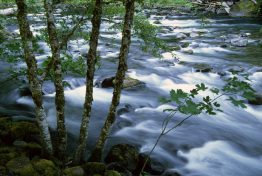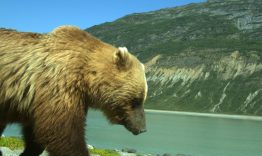Mushrooms have a long-standing history as a culturally and nutritionally significant food source, yet we still have much to learn about our fungal friends. Enter the wondrous world of mushrooms: some toxic, some colorful; some cap-tipped, some mimicking a wave in the ocean. Regardless of how much research has been done on fungi, we have only scratched the surface, with only four percent of fungi species characterized.
Read more »Two College of the Environment faculty recognized by American Geophysical Union
University of Washington School of Oceanography Professor Ginger Armbrust and Department of Atmospheric Sciences Professor Dennis Hartmann will be honored at the 2022 American Geophysical Union Fall Meeting in December. Armbrust has been named a 2022 AGU Fellow in recognition of her outstanding contributions to ocean sciences and for embodying AGU’s values by fostering equity, integrity, diversity and open science; by mentoring; through public engagement; and in her communications.
Read more at UW News »Animals in national parks impacted by even just a few people
People often visit U.S. national parks to catch a glimpse of wildlife. But how does our presence impact the animals we hope to see? National park traffic has grown steadily over the past decade, and popular parks like Yosemite and Yellowstone can easily see over a million visitors a year. In these heavily used areas, one might expect animals to change their behavior to avoid humans.
Read more at UW News »UW expert on tropical storms discusses Hurricane Ian
Shuyi Chen, a UW professor of atmospheric sciences, was traveling to a conference in Boston as Hurricane Ian approached the Gulf of Mexico. During breaks at the conference, she provided her thoughts on the closely watched catastrophic storm system that made landfall in Florida on Sept. 28. Q: What are your thoughts on Hurricane Ian? How does it compare to other storms?
Read more at UW News »Study suggests La Niña winters could keep on coming
Forecasters are predicting a “three-peat La Niña” this year. This will be the third winter in a row that the Pacific Ocean has been in a La Niña cycle, something that’s happened only twice before in records going back to 1950. New research led by the University of Washington offers a possible explanation. The study, recently published in Geophysical Research Letters, suggests that climate change is, in the short term, favoring La Niñas.
Read more at UW News »





